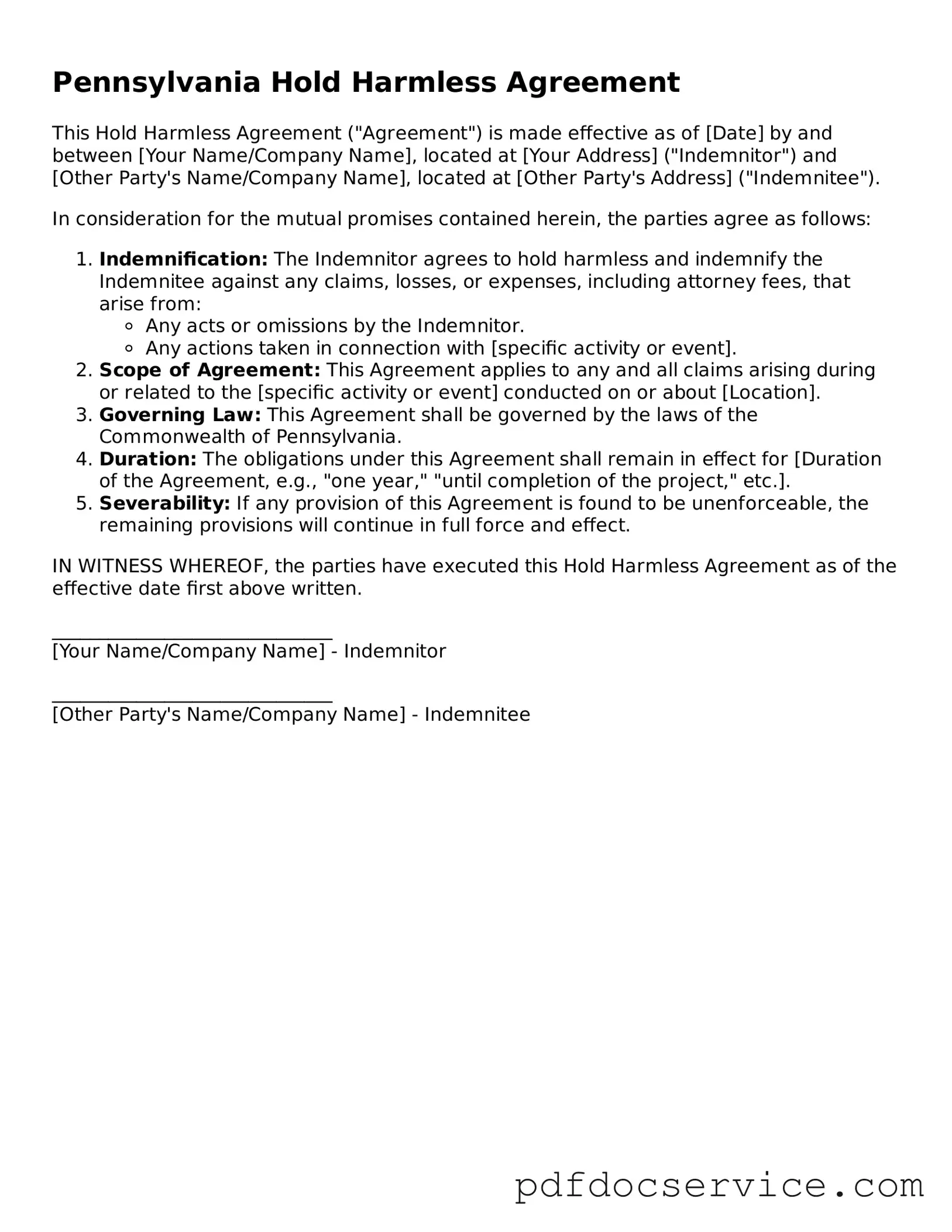What is a Hold Harmless Agreement in Pennsylvania?
A Hold Harmless Agreement is a legal document that protects one party from liability for certain actions or events. In Pennsylvania, this agreement typically involves one party agreeing not to hold another party responsible for any injuries or damages that may occur during a specific activity or event. These agreements are commonly used in various contexts, including construction projects, recreational activities, and rental agreements.
Who typically uses a Hold Harmless Agreement?
Various parties may use a Hold Harmless Agreement, including:
-
Property owners
-
Contractors and subcontractors
-
Event organizers
-
Businesses offering services
-
Individuals participating in recreational activities
Each of these parties may want to limit their liability in case of accidents or injuries that occur during their activities.
What should be included in a Hold Harmless Agreement?
A comprehensive Hold Harmless Agreement should include the following elements:
-
The names and addresses of all parties involved.
-
A clear description of the activity or event covered by the agreement.
-
Specific language stating that one party will not hold the other liable for any injuries or damages.
-
Any limitations or exclusions to the agreement.
-
Signatures of all parties, indicating their acceptance of the terms.
Including these elements helps ensure that the agreement is enforceable and clearly understood by all parties.
Is a Hold Harmless Agreement legally binding in Pennsylvania?
Yes, a Hold Harmless Agreement can be legally binding in Pennsylvania, provided it meets certain criteria. The agreement must be clear, specific, and voluntarily signed by all parties. Courts generally uphold these agreements unless they are found to be unconscionable or against public policy. It’s essential to draft the agreement carefully to avoid any potential legal issues.
Can a Hold Harmless Agreement be challenged in court?
Yes, a Hold Harmless Agreement can be challenged in court. Common grounds for challenging such agreements include:
-
Ambiguity in the language used.
-
Coercion or lack of voluntary consent.
-
Unconscionability, meaning the terms are excessively unfair.
-
Public policy violations, where the agreement contradicts societal norms or laws.
When challenged, courts will examine the specific circumstances surrounding the agreement and the intent of the parties involved.
How can I ensure my Hold Harmless Agreement is enforceable?
To enhance the enforceability of your Hold Harmless Agreement, consider the following tips:
-
Use clear and straightforward language.
-
Ensure all parties understand the terms before signing.
-
Consult with a legal professional to review the agreement.
-
Include a clause that specifies the governing law, such as Pennsylvania law.
-
Keep a signed copy for your records.
Taking these steps can help prevent disputes and ensure that the agreement holds up in court if necessary.
What are the potential risks of signing a Hold Harmless Agreement?
Signing a Hold Harmless Agreement can carry certain risks. By agreeing to this type of contract, you may be waiving your right to seek compensation for injuries or damages that occur during the specified activity. This means that if an accident happens, you may not be able to hold the other party accountable. It’s crucial to read the agreement carefully and understand its implications before signing. Consulting with a legal professional can help clarify any concerns you may have.
